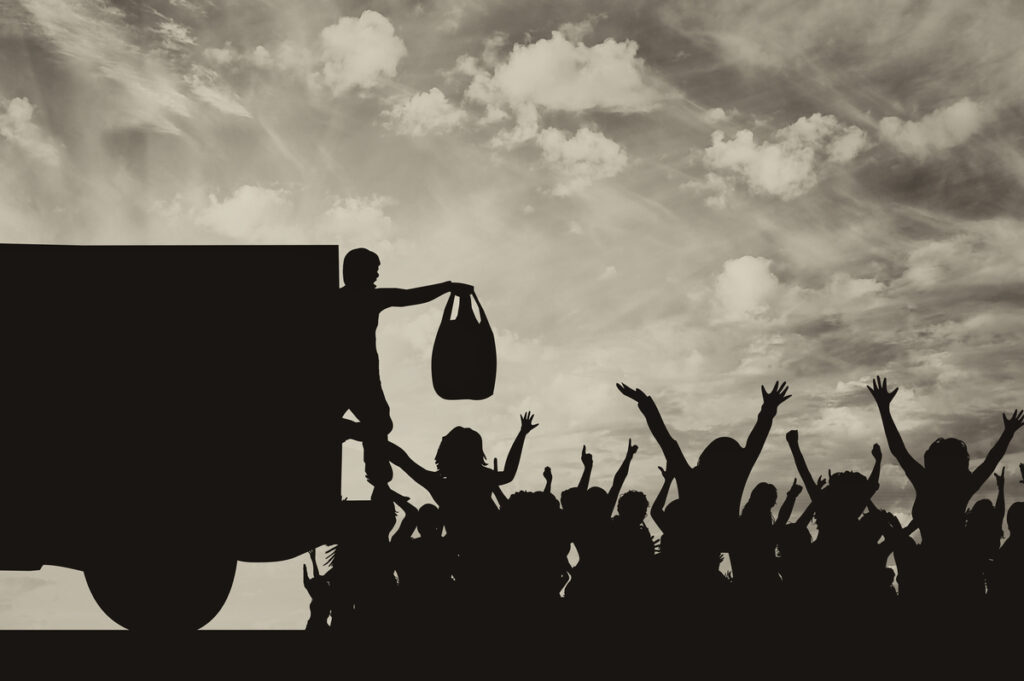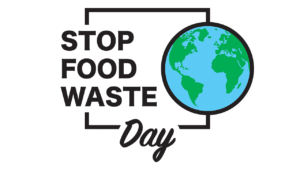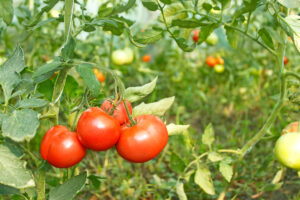Some reality television shows, like the History Channel’s Alone, feature contestants who volunteer to live rough for a period of time. The focus of these shows is watching contestants’ search for food and seeing how they deal with the hunger that ultimately results when such efforts prove fruitless. Fortunately for them, they know their situations are temporary. Unfortunately, for millions of people, the prospect of starvation is a never-ending reality. Journalist Susannah Savage reports, “More than 250 million people faced severe hunger last year, with people in seven countries on the brink of starvation.”[1] She notes that the number of people facing starvation in 2022 was a sharp increase from 193 million facing starvation in 2021. Why? The reasons are myriad: Fallout from Russia’s invasion of Ukraine; inflation causing high food prices; continued repercussions from the Covid-19 pandemic; regional conflicts; climate change; and extreme weather events. Savage notes that 2022 “was the fourth year in a row that the number in urgent need of food aid has risen.” She adds, “Acute food insecurity is hunger that puts people’s livelihoods and lives in immediate danger and threatens to slide into famine and cause widespread death.”
Food Security and National Security
The staff at World Atlas note, “The breadbaskets of the world are the regions in the world that produce food, particularly grains to feed their people as well as for export to other places. The regions invest heavily in agricultural practices as well as agricultural-based industries to process their produce. They are very important regions in the world because they greatly contribute to the global food supply.”[2] According to McKinsey & Company analysts, there are six recognized world breadbaskets: Brazil/Argentina, United States/Canada, Northwestern Europe, Northern India, China/Southeast Asia, and Russia/Ukraine.[3] They go on to note, “The human diet is highly dependent on just four grains: rice, wheat, corn, and soy. They make up almost half of the calories of an average global diet, with rice and wheat contributing 19 percent and 18 percent, respectively.”
Experts have long been concerned that the global food supply chain relies on so few basic grains. The McKinsey analysts report, “Sixty percent of global food production occurs in just five countries: China, the United States, India, Brazil, and Argentina. Even within these countries, food production is highly concentrated in a few regions. For example, 88 percent of Indian wheat production comes from five states in the northern part of the country and in the United States, five Midwestern states account for 61 percent of corn production, according to the Department of Agriculture. This means extreme weather events [or other disruptions] in those regions could affect a large portion of global production.” Too many people believe that food insecurity is only a problem for developing countries. Jessica Fanzo, the Bloomberg Distinguished Professor of Global Food Policy and Ethics at the Berman Institute of Bioethics at the Bloomberg School of Public Health at Johns Hopkins University, believes such a view “is a naïve perception of the world.”[4]
University academics, Thomas S. Benson, Ore Koren, and Benjamin E. Bagozzi, note there is a relationship between food insecurity and social unrest. They write, “Food insecurity can clearly raise the risk of mass unrest, the key question is: When do people, faced with food insecurity, choose to mobilize?”[5] Their answer might surprise you. “We did not find,” they write, “that rising food insecurity, in and of itself, contributed to a higher risk of social unrest. However, we did find that the frequency of unrest events in urban contexts noticeably increased when and where people were simultaneously experiencing both acute food insecurity and acute water scarcity.” As I noted in a previous article, water scarcity is going to be a concern for both populations and industries in the years ahead and could be a source of conflict between communities and companies.[6]
Obviously, when food and water scarcity result in social unrest, the situation is a national security issue. However, José Andrés, a chef, philanthropist, and founder of the new Global Food Institute at George Washington University, believes we need to take a broader view and consider how global food insecurity can affect national security. He explains, “Threats to U.S. national security are not just measured in missiles, armies and terrorists. Political and economic turmoil, in countries that are important to America and its allies, can also be overwhelming. That’s why fighting hunger and thirst is no longer just a challenge for aid workers. The scale of the global crisis is so great that hunger now represents a threat to our security, our borders and our projection of power.”[7]
Despite his impressive credentials as a chef and humanitarian, Andrés understands that some people may question his national security credentials. He writes, “Don’t take a chef’s word for it. Over the past decade or so, the U.S. intelligence community assessed the likely impact of global food and water insecurity. U.S. security agencies predicted a world, right around now, when water shortages and floods would ‘risk instability and state failure, increase regional tensions, and distract them from working with the United States on important US policy objectives.’ … They forecast that in countries of strategic importance to us, ‘declining food security will almost certainly contribute to social disruptions and political instability.'”
Concluding Thoughts
If solving the global food security challenge was easy, a quarter of a billion people wouldn’t be worried about where their next meal will come from. As Fanzo notes, “The global food system is big and broad. Different kinds of food are grown around the world. It’s grown in different ways under different climatic conditions with different people. And then it moves through this whole chain of events, of being processed and packaged and stored. The nutritional quality of those foods can really change. The safety of those foods can change. The whole texture and taste of these foods can change. While food is of course important for our everyday needs, there’s so much other stuff wrapped into food: livelihoods, culture, traditions, economics, politics. And that’s what makes food such an interesting space to work in, but one that’s so contentious and filled with so much fraught controversy and disagreement.”
Andrés argues that food security needs to be a higher priority on the national security agenda. He explains, “I have not succeeded in convincing my friends on either side of the aisle on Capitol Hill or at the White House that food must stop being a policy afterthought. The time has come for us all to prioritize food in our public policy — at home and internationally. … We cannot build a wall high enough to stop the army of mothers with hungry children in their arms. Our problem is not that we lack the resources or know-how to relieve these unbearable pressures. Our problem is that we lack focus. … Food can be the solution to multiple crises: from our health to our climate, from immigration to global security. But only if we think differently and prioritize our food. Our global food systems are broken, and we urgently need structural change.”
Footnotes
[1] Susannah Savage, “More than a Quarter of a Billion People Went Hungry in 2022,” Scientific American, 4 May 2023.
[2] Staff, “The Breadbaskets Of The World,” World Atlas.
[3] Jonathan Woetzel, Dickon Pinner, Hamid Samandari, Hauke Engel, Mekala Krishnan, Nicolas Denis, and Tilman Melzer, “Will the world’s breadbaskets become less reliable?” McKinsey Sustainability, 18 May 2020..
[4] Janet Bush and Michael Chui, “Forward Thinking on the fragility of the world’s food systems and how to fix them with Jessica Fanzo,” McKinsey & Company, 16 November 2022.
[5] Thomas S. Benson, Ore Koren, and Benjamin E. Bagozzi, “Food Insecurity and Unrest: What You Need to Know,” Political Violence at a Glance, 12 July 2022.
[6] Stephen DeAngelis, “Water is as Important to Some Industries as Electricity,” Enterra Insights, 18 July 2023.
[7] José Andrés, “Why global hunger is a national security threat,” The Washington Post, 22 May 2023.





